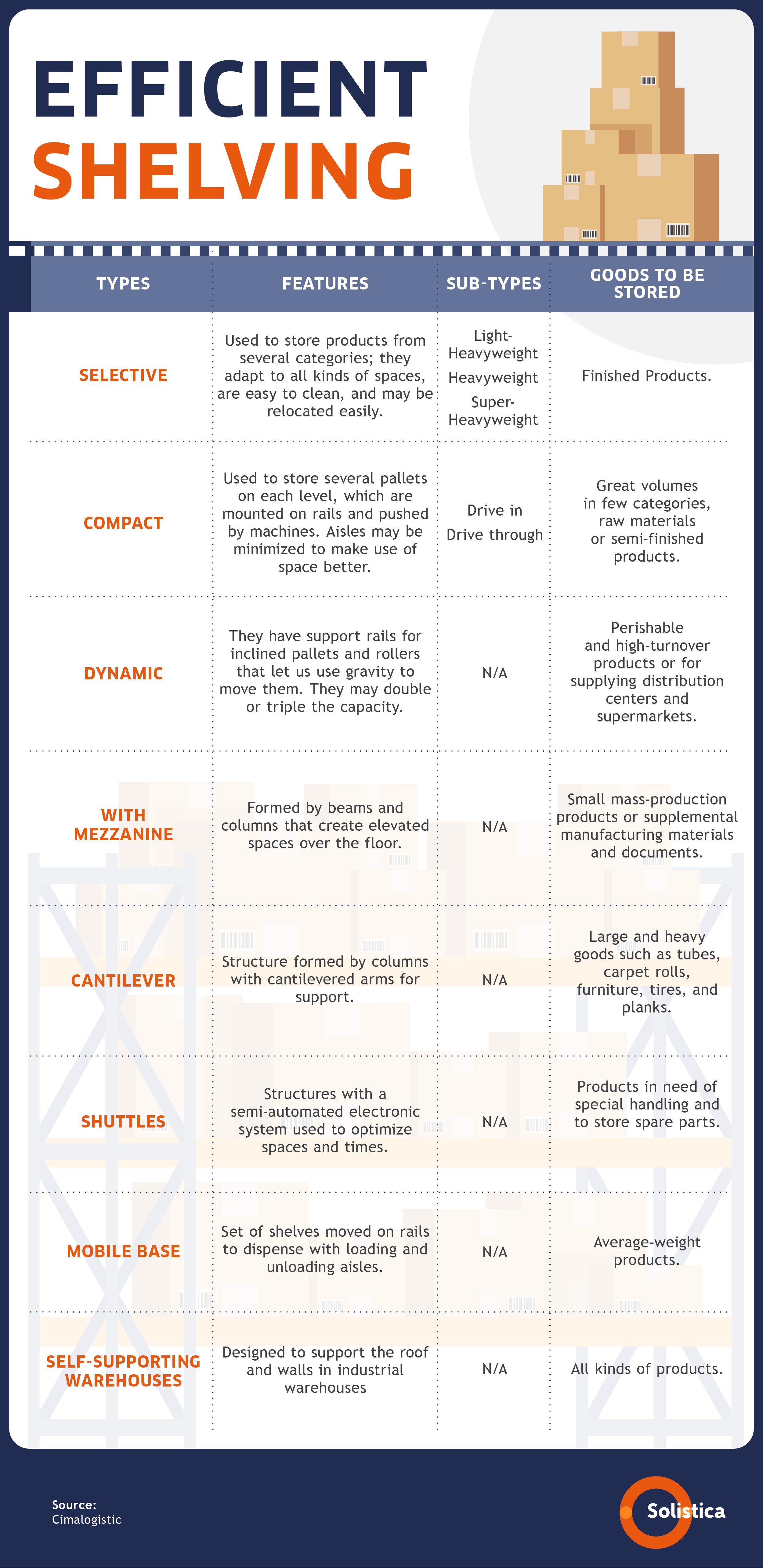Beyond safekeeping products, a warehouse is a space that optimizes the flow of merchandise and information while adding value to the supply chain by improving costs and customer service.
The Warehouse aims to reduce delivery time, provide accurate control of goods, make the best use of available space, minimize handling and transportation, lower the return rate of products due to mistakes, and improve costs.
These are its main functions:
- Manage the flow of incoming goods and dock assignation.
- Ensure we are getting the goods that we expect in terms of types and quality.
- Break down, palletize, label, and prepare the goods, among other functions.
- Place the goods on shelves according to rotation, closeness to docks, ease of access, and type of product.
- Protect and control the merchandise with technical and human means.
- Carry out full-pallet and partial-pallet orders.
- Document the exit of goods.
- Consolidate cargoes, which means to combine goods for shipment.
- Design flows of materials and merchandise moves.
- Foster reverse logistics (reception, sort, repair, return to market).
Integrating the Warehouse
Integrating the warehouse basically means to invest in technology and facilities to adapt to the customers’ newest demands. We must modernize the complete supply chain so we can improve productivity and quality.
Integrating the warehouse allows companies to foresee interruptions throughout the supply chain and take timely, proactive, and profitable measures to meet the deliveries requirements. It also allows companies to carry out strategies to lower the overall costs of products; in other words, it lowers the inventory costs without risking increasing the manufacturing and distribution costs disproportionately.
In addition, when companies integrate the warehouse, they can monitor their customer satisfaction index by tracking metrics such as shipments on time, product returns, and others.
The following are some of the reasons why it is important for all industries, but specially for manufacturers, to manage the warehouse operations, integrating them to the supply chain:
- Inventory Optimization: setting inventory goals in terms of the variability of offer and demand, as well as combining inventories accurately can satisfy the immediate demand and avoid shortages.
- Cost Reduction: effectively managed warehouse operations can become a source of income by integrating the management of operations with the right automation technology and processes.
- Visibility Increase: talks about the possibility of monitoring the project’s costs and tasks in detail all the way to the Return of Investment (ROI). We can achieve this with a management system integrated to those of suppliers, clients, and partners.
How can we Improve the Integration of a Warehouse?
We give you some advice next on how to properly integrate and set up a warehouse:
- Understand the purchase patterns of your clients so you can adapt the flow of merchandise.
- Design the warehouse considering the storage needs and the traffic of goods.
- Consider facilities that make it easy to control the merchandise.
- Record all the receptions, exits, moves, characteristics, and number of products.
- Synchronize the processes carried out at the warehouse with the rest of the supply chain.
- Implement information flows that communicate with the inventory management systems.
- Identify each product with a different SKU.

Warehouse Management Systems
Warehouse Management Systems allow companies to lower costs, increase reliability, and improve the performance of logistics operations at the warehouse. These tools let companies integrate processes such as picking, cross-docking, assembly, labeling, packing, and kitting. You can implement different options:
- A module within the Enterprise Resource Planning System (ERP)
- An independent warehouse management solution (especially for mid-size companies)
- Capacities of the ERP provider that may be implemented independently
- Advanced Independent solution built by an expert in Warehouse Management Systems (WMS). Learn more here about how WMS work.
Which System can we Recommend?
An Advanced Warehouse Management System (WMS) is the best option when the complexity of the operation is high and the integration to the supply chain is essential. A WMS from the ERP supplier or something similar may work well when the complexity of the warehouse operation is high, but the integration requirements are low. Meanwhile, if the complexity of the warehouse operation is low but the integration requirements are high the best option would be a simple warehouse management solution, which comes as a module of the ERP.
If the company is unsure about being able to manage its warehouse well, the best solution is to hire an experienced external supplier that can contribute advantages such as outsourcing fixed costs, optimizing results, taking advantage of economies of scale, flexibility for working in different shifts, and lowering the risks.
Solistica understands how important it is to modernize the warehouse. Thanks to our experience in diverse industries, we apply the best practices in warehouse integration strategies throughout the supply chain. In terms of warehousing, we offer solutions such as dedicated and multiple-client facilities, in-house operations at our customers’ warehouses, dry and multiple-temperature warehouses, Warehouse Management Systems (WMS), control and optimization of inventories, and IT connectivity. Learn more here.
*This blog was originally published on December 20, 2018 and modified on June 3rd 2022.

